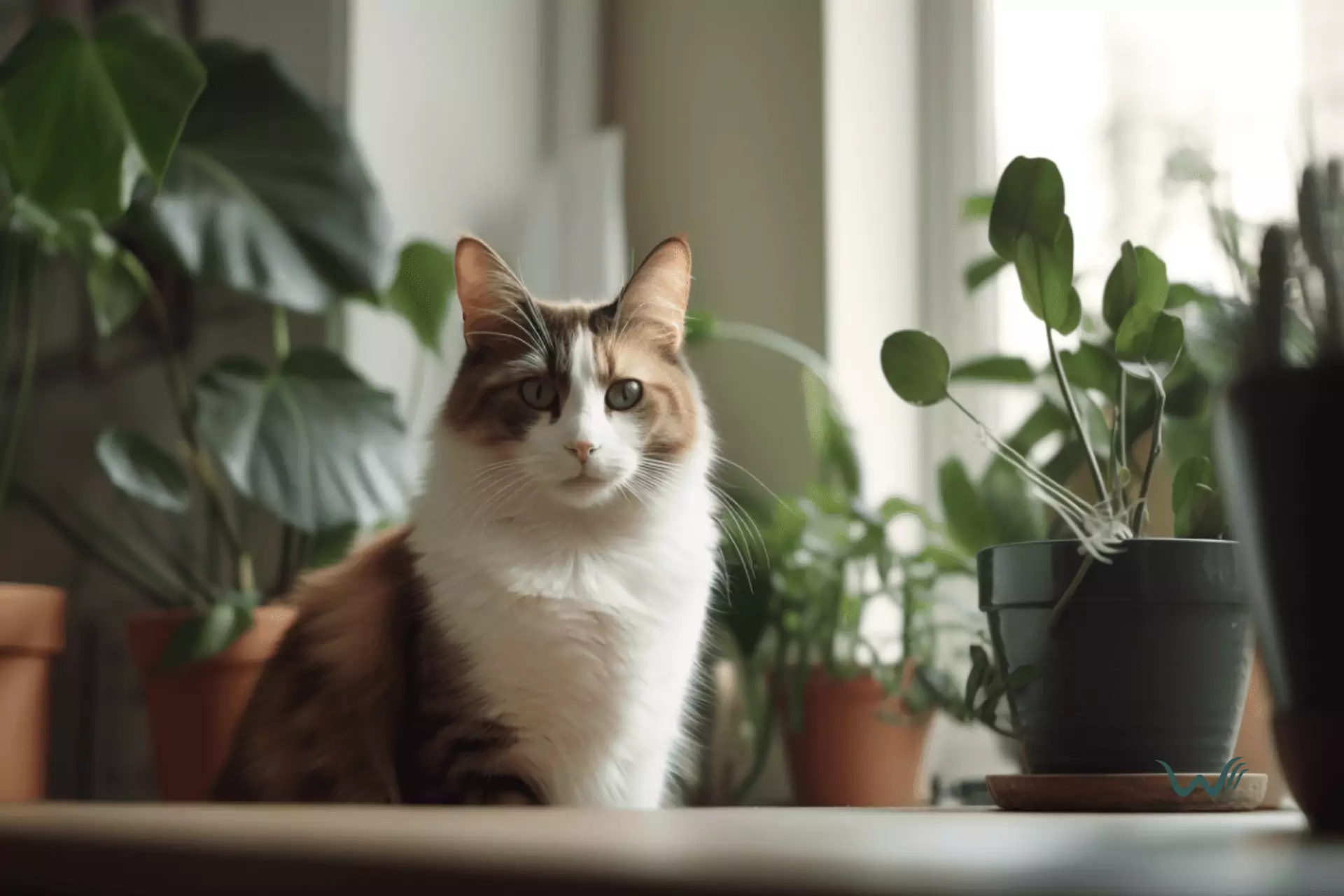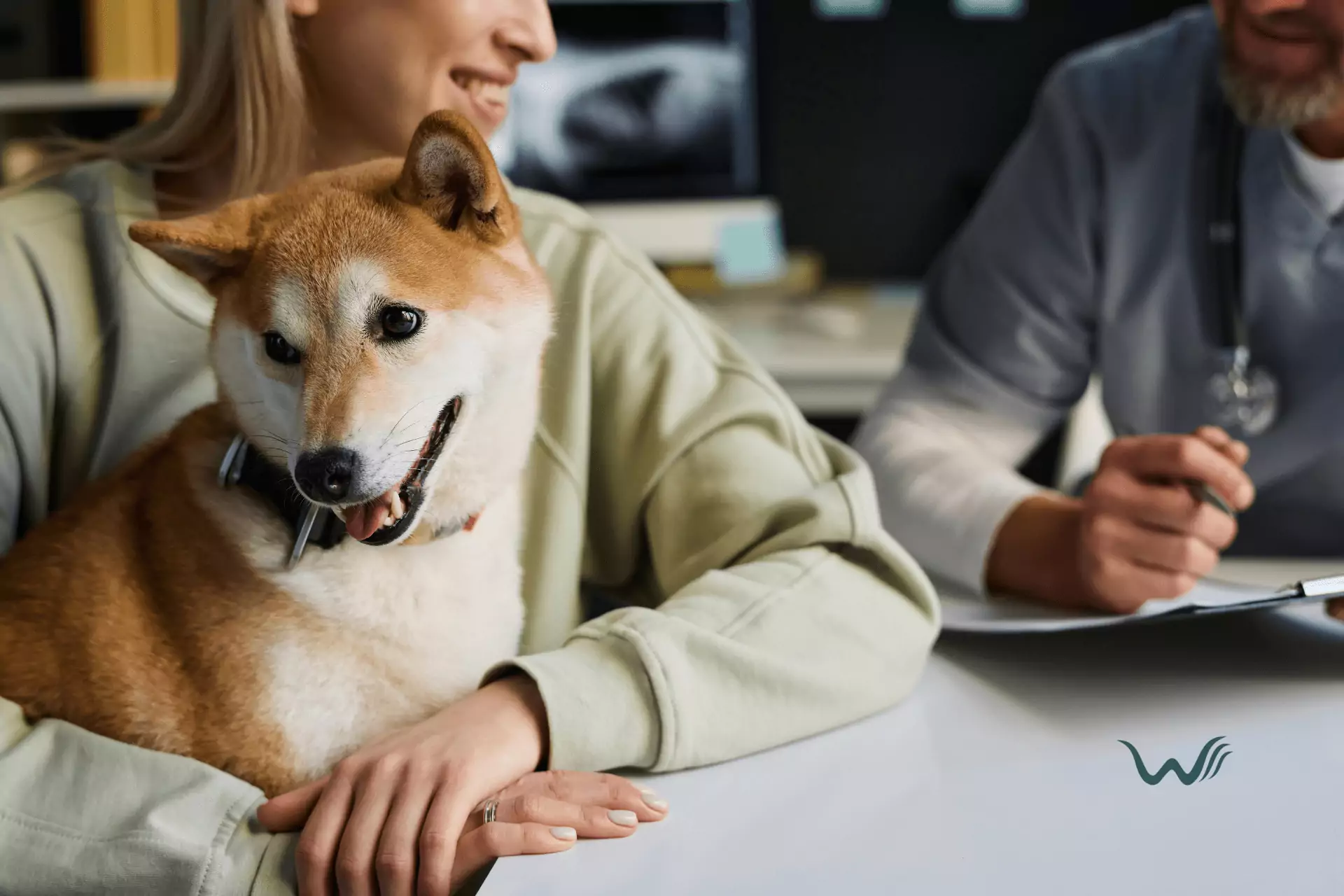

Houseplants That May Be Toxic To Your ESA Cat
by Haley Mills
Last updated: April 21, 2024
Verified and Approved by:
Angela Morris,
MSW, LCSW
Fact Checked

Are you a proud owner of an Emotional Support Animal (ESA) cat? If so, you know how important it is to create a safe and nurturing environment for your furry companion. While house plants can add beauty and freshness to your home, it’s crucial to know that some plants can be toxic to cats, including ESAs. This article will discuss five common house plants that may pose a danger to your ESA cat and provide alternatives to keep your home both stylish and safe for your beloved pet.
Understanding the dangers of toxic houseplants is essential for any ESA cat owner. Cats are curious creatures, and their natural instincts drive them to explore their surroundings, which may include investigating plants. Unfortunately, some plants can be harmful or even fatal if ingested by cats. As responsible pet owners, we must familiarize ourselves with the types of plants that can be toxic to our furry friends. By doing so, we can take the necessary precautions to ensure a safe environment for our ESA cats, reducing the risk of potential health complications.
Understanding the Dangers of Toxic House Plants
Now that you know how important it is to ensure the safety of your ESA cat, let’s dive into understanding the dangers of toxic houseplants that could potentially harm your furry friend. Many common house plants can be harmful to cats if ingested, leading to a range of symptoms from mild digestive issues to severe toxicity. Some of the most common toxic house plants include lilies, aloe vera, philodendron, and pothos. These plants contain substances that can cause gastrointestinal upset, such as vomiting and diarrhea, as well as more serious issues like kidney damage or failure.
It’s crucial to be aware of the signs of plant poisoning in cats, including drooling, difficulty breathing, lethargy, and even seizures. If you suspect your cat has ingested a toxic plant, it’s essential to contact your veterinarian immediately. They can guide the best course of action, which may include inducing vomiting or administering activated charcoal to prevent absorption of the toxins. Additionally, it’s essential to keep toxic house plants out of your cat’s reach or consider removing them from your home altogether to ensure their safety. By understanding the dangers of toxic house plants; you can take the necessary precautions to protect your beloved ESA cat from potential harm.
Identifying Common Toxic House Plants
Identifying common toxic house plants can be challenging, especially when you have a furry friend like an ESA cat. Many house plants can be harmful or even deadly to cats if ingested. Some common toxic house plants include lilies, philodendrons, and snake plants. Lilies, in particular, are highly toxic to cats and can cause kidney failure if ingested. Philodendrons and snake plants contain insoluble calcium oxalate crystals, which can cause intense burning and irritation in the mouth and throat. It is important to be aware of these common toxic house plants and keep them out of reach of your ESA cat.
In addition to lilies, philodendrons, and snake plants, several other common house plants can be toxic to cats. Pothos, also known as devil’s ivy, contains calcium oxalate crystals and can cause similar symptoms as philodendrons and snake plants. Peace lilies, Schefflera, and ZZ plants are also toxic to cats and can cause vomiting, drooling, and difficulty swallowing if ingested. It is crucial to research any new house plants you bring into your home to ensure they are safe for your ESA cat. If you are unsure about the toxicity of a specific plant, it is best to err on the side of caution and keep it out of your cat’s reach.
Creating a Safe Environment for Your ESA Cat
To ensure the safety of your beloved feline companion, it’s essential to create an environment that is free from potential hazards. One of the first steps in creating a safe environment for your ESA cat is to remove any toxic house plants from your home. As mentioned in the previous subtopic, several common house plants can be toxic to cats, causing symptoms ranging from mild gastrointestinal upset to more severe reactions. By identifying and removing these plants from your living space, you can significantly reduce the risk of your cat ingesting any harmful substances.
In addition to removing toxic house plants, keeping other potential hazards out of your cat’s reach is essential. This includes securing any electrical cords or wires, as cats may be tempted to chew on them, which can lead to injury or even electrocution. It’s also crucial to secure any chemicals or cleaning products in cabinets or high shelves, as ingestion of these substances can be extremely dangerous for your cat. Lastly, be mindful of any small objects or decorations that could be easily swallowed, as these can pose a choking hazard.
By taking these precautions and creating a safe environment for your ESA cat, you can help ensure their well-being and prevent any accidents or illnesses. Regularly inspect your living space for potential hazards and adjust as needed. Remember, a safe environment is key to providing your feline companion a happy and healthy life.
Alternatives to Toxic House Plants
There are safer alternatives for your furry friend to enjoy in your indoor space. Instead of having toxic house plants, you can opt for pet-friendly plants that add beauty to your home and provide a safe environment for your ESA cat. Some popular options include spider plants, Boston ferns, and African violets. These plants are non-toxic to cats and can be placed in various areas of your home, such as windowsills or hanging baskets. Spider plants, in particular, are known for their air-purifying properties, making them a great addition to any indoor space.
Another alternative to toxic house plants is to create a cat-friendly indoor garden. You can set up a designated area for your cat to explore and enjoy. This can include catnip plants, cat grass, and cat-friendly herbs like mint or parsley. Not only will this provide a safe and stimulating environment for your cat, but it can also help prevent them from being tempted to chew on toxic plants. Additionally, you can incorporate vertical spaces, such as cat shelves or wall-mounted plants, to create a garden for your cat to climb and explore. By choosing these pet-friendly alternatives, you can ensure a safe and enjoyable indoor environment for both you and your ESA cat.
Can I Still Have Toxic Houseplants If I Register My Cat as an ESA?
Yes, you can still have toxic houseplants if you register your cat as an esa. However, it’s important to be mindful of the plants you bring into your home. Some common toxic plants for cats include lilies, aloe, and ivy. Be sure to research which plants are safe for your feline friend.
Can Catnip Affect an ESA Cat’s Health or Behavior?
Yes, animals benefit from catnip, but it’s essential to know how it affects your ESA cat. While catnip is generally safe, some cats may experience digestive issues or behavioral changes. Monitor your cat’s reaction and consult a vet if you notice any concerning behavior after giving them catnip.
What to Do If Your Cat Ingests a Toxic Plant
If your feline friend happens to munch on a harmful plant, what steps should you take? First and foremost, it is important to remain calm. While it can be alarming to see your cat ingest something toxic, panicking will make the situation more stressful for you and your pet. Next, try to identify the plant that your cat ate. Take a picture or collect a sample of the plant if possible, as this will be helpful for your veterinarian in determining the appropriate treatment.
After identifying the plant, contact your veterinarian immediately. They will be able to guide the next steps to take. In some cases, inducing vomiting may be recommended, but this should only be done under the guidance of a professional. It is vital to never induce vomiting without consulting a veterinarian, as certain plants can cause more harm if regurgitated.
While waiting for professional advice, can also try to remove any remaining plant material from your cat’s mouth or paws. Be cautious while doing this, as some plants may have sharp or toxic parts that could harm you or your pet. Additionally, make sure to keep your cat comfortable and monitor their behavior closely. Look out for symptoms such as vomiting, diarrhea, drooling, lethargy, or any other abnormal behavior, which could be signs of plant toxicity. Prompt action is crucial in these situations, so do not hesitate to seek veterinary assistance.
Frequently Asked Questions
How do I know if my cat has ingested a toxic house plant?
If your cat has ingested a toxic house plant, look out for symptoms like vomiting, diarrhea, excessive drooling, difficulty breathing, or lethargy. It’s important to contact your veterinarian immediately for proper guidance and treatment.
Are there any warning signs or symptoms my cat may show if they have been affected by a toxic house plant?
Warning signs or symptoms that your cat may show if affected by a toxic house plant include vomiting, diarrhea, excessive drooling, difficulty breathing, lethargy, and changes in appetite or behavior. Immediate veterinary attention is recommended.
Can I still have houseplants in my home if I have an ESA cat?
You can still have houseplants in your home if you have an ESA cat. Just make sure to choose non-toxic plants and keep them out of your cat’s reach to ensure their safety.
Are there any non-toxic house plants that are safe for my ESA cat?
Yes, there are several non-toxic house plants that are safe for your ESA cat. Some examples include spider plants, Boston ferns, and African violets. Researching and choosing plants that won’t harm your furry friend is important.
What common household items can be used as alternative decorations or plants, instead of toxic house plants?
Some common household items that can be used as alternative decorations or plants include fake plants, dried flowers, and non-toxic herbs like catnip. These options provide a safe environment for your ESA cat.
Certify Your Emotional Support Animal Today

Why You Can Rely on Us?
At Wellness Wag, we believe your pet deserves care rooted in both science and compassion. Each article is carefully researched, written in clear language for pet owners, and then reviewed by qualified professionals to ensure the information is evidence-based, current, and practical for real-life care. Our goal is to help you feel confident in making informed decisions about your pet’s health and well-being.
Reviewed by
Angela Morris, MSW, LCSW
Angela is a licensed clinical social worker with 20 years of experience in patient advocacy and community mental health. She has assisted numerous clients with ESA evaluations and brings a deep understanding of disability accommodations, ensuring that all information is accurate, supportive, and practical.

Written by :
Haley Mills
Last Updated :
April 21, 2024












